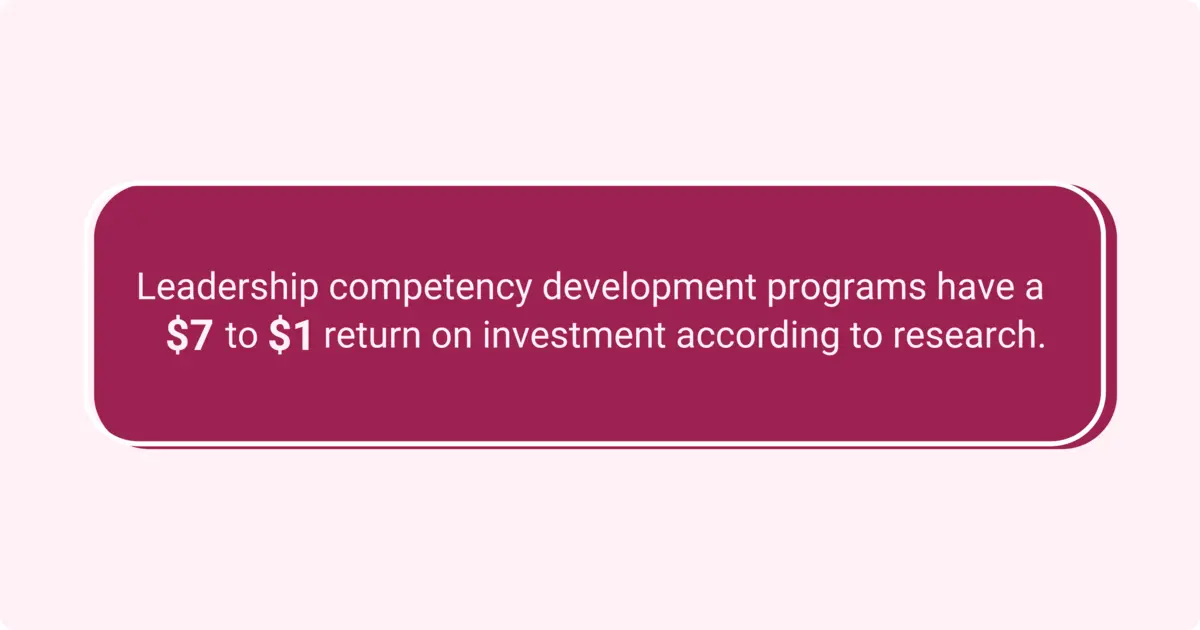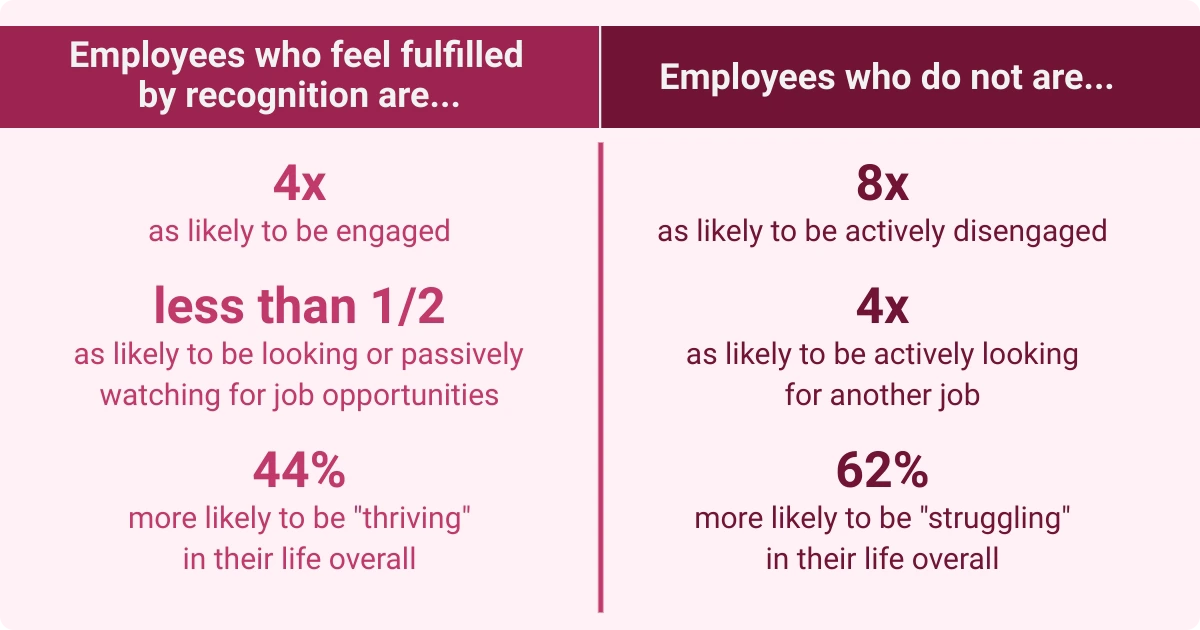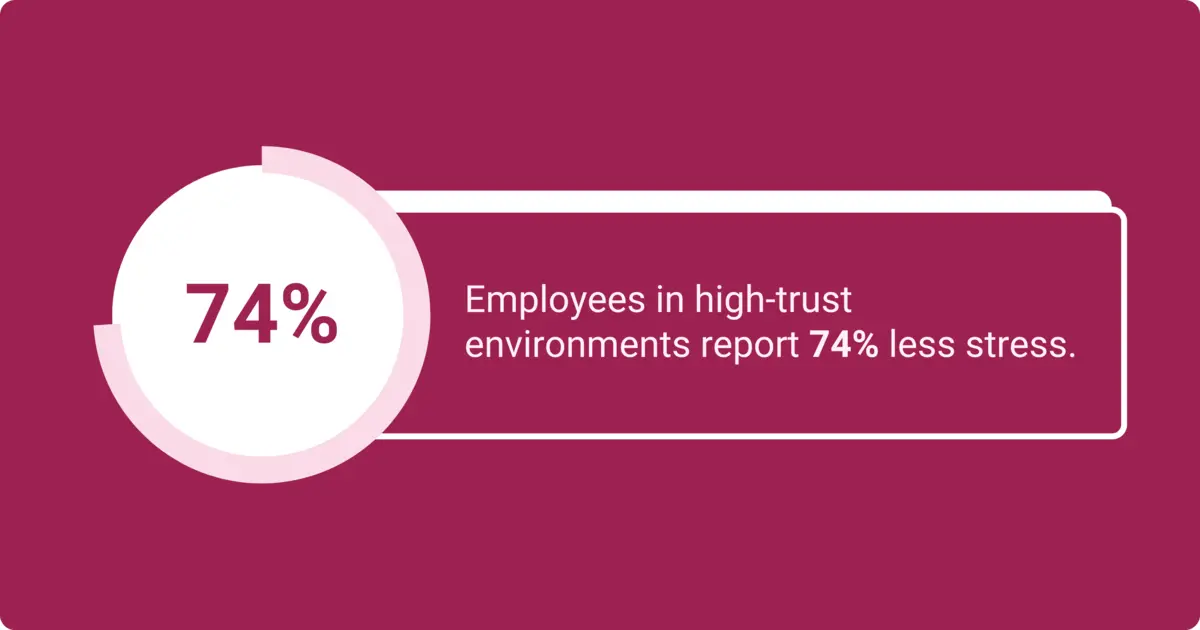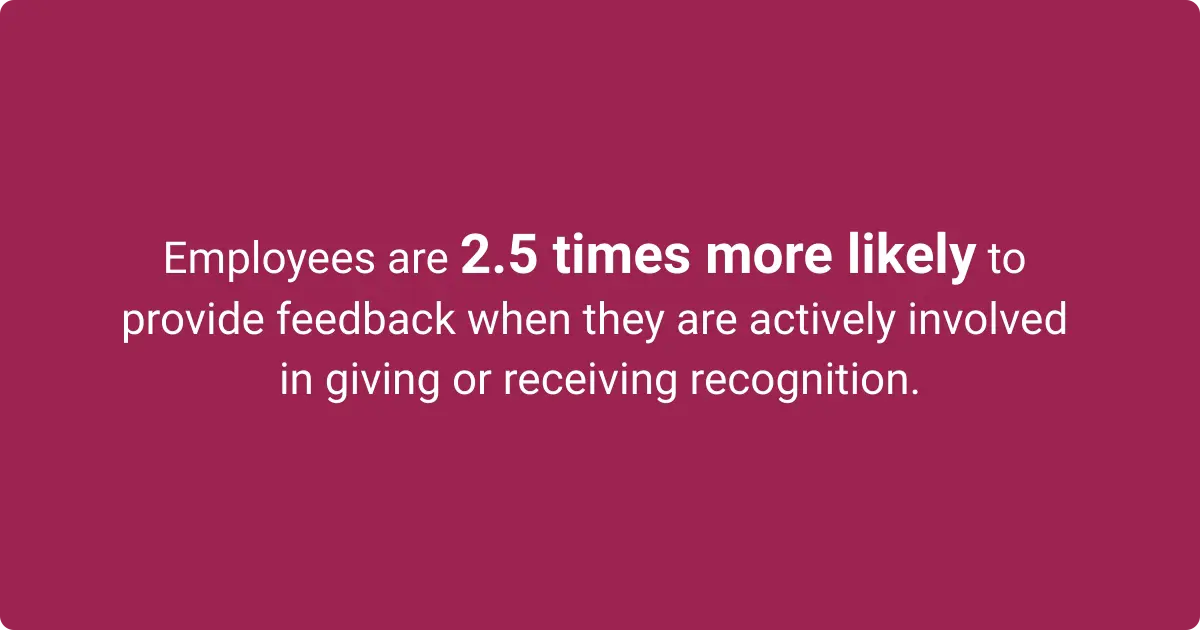Mastering Leadership Competencies: The Skills That Drive Success
Table of contents
- What are leadership competencies?
- Why leadership skills matter in organizations
- Key leadership competencies for effective leadership
- Strategic leadership skills for business success
- Matching certain leadership competencies with industry demands
- How to develop leadership competencies
- Creating a leadership competency framework for success
- Keeping leadership skills relevant in a changing world
- Challenges in assessing leadership effectiveness
- Leadership competencies in modern workplaces
- Invest in leaders who understand what matters

What separates the leaders who inspire action from those who merely manage people? According to Harvard Business Publishing’s 2024 Global Leadership Development Study, 70% of L&D professionals agree: effective leadership behaviors and tools aren’t optional—they’re essential for business growth and a thriving work environment.
Backed by insights from over 1,100 Learning and Development professionals, the data is clear: leadership competencies aren’t soft skills—they’re power skills. They drive engagement, boost retention, and create resilient, high-performing teams.
In this post, we’ll break down the core competencies future leaders need to succeed—and the actionable ways to develop leaders across every level of your organization.
What are leadership competencies?
Leadership attributes and key competencies for leaders are the key skills and qualities needed to be successful. While these attributes may change across industries, the universal principles are the same. Here are some real-life examples of them in action.
A team leader enables discussions between two team members, helps them see each other's perspectives, and finds a solution that works for both, which shows great conflict resolution competencies.
A manager handles workload by delegating tasks to other team members with clear instructions, empowering them to take ownership of the project. This shows empowerment competency.
An organizer schedules a fun, engaging recruitment event for a volunteer group that struggles to find new members, sharing impactful stories and motivating others to invest in the cause, showing motivation and inspiration competencies.
An executive organizes a virtual lunch for those who work in a hybrid or remote setting to build morale and provide a human connection within the company.
Why leadership skills matter in organizations
Strong, competent leaders drive a culture of excellence in any organization. They lead to continuous improvement, higher standards, and a collective commitment to the organization’s goals. Leaders set the tone for not only the output but also the environment in which people work.
We can separate these key skills into four sections to provide a holistic approach to leadership assessment and development.
- Knowledge: what people know
- Competency: what people can do
- Experience: what people have done
- Personal: what people are
Impact of leadership attributes on business performance
Strong core leadership attributes enable strategic goal-setting, create a clear vision that all team members understand, and inspire teams to work cohesively toward meeting business objectives.
Some studies put the return on investment for leadership development programs at $7 for every $1 spent. While leadership development may not feel tangible, the results are quantifiable in almost every area of your company.

Leadership competency and employee engagement
Simply put, workers don’t perform as well for leaders they don’t respect. They are less likely to invest in your product or service if they don’t have a good relationship with leadership.
Workhuman research shows that frequent check-ins for onsite and remote workers can make employees two times as likely to trust their managers and five times less likely to be disengaged from business objectives.
Looking forward, most experts see employee recognition and acknowledgment as an important leadership skill for uniting the workforce and increasing productivity.
Key leadership competencies for effective leadership
As we discuss the most important leadership competencies for effective leadership, we’ll focus on those related to personal growth, managing teams, communication skills, aligning company culture, and business success.
Leadership competencies for personal growth
Accountability, lifelong learning, and resilience are vital to help employees grow. According to Gallup research on stagnating engagement among US employeesOpens in a new tab, a lack of employee engagement costs businesses almost $2 trillion in lost productivity each year.
Every employee wants to be seen, valued, and accepted for who they are, and the following examples of leadership skills highlight how.
- Self-leadership and accountability: At the heart of leadership is taking ownership of successes and failures. Goal-setting and responsibility are the foundations of leadership.
- Continuous learning and adaptability: In every industry, leaders fail when they refuse to adapt and learn. As younger professionals enter the workforce, those leaders become outdated, whether through technology, employee recognition software, or business practices they refuse to learn. Constant learning is vital in shaping industry-leading executives.
- Resilience and emotional intelligence: Workers can’t succeed in the professional world if they aren’t thriving with their basic needs. To build an inclusive culture, leaders need to use their emotional intelligence to create a feeling of well-being and psychological safety in high-stress situations.
- Decision-making: There comes a time when decisions have to be made, and someone has to make them, even if they're hard. Learning to make decisions, gaining insights from them, and applying those lessons moving forward is an important leadership competency.
Leadership skills for managing teams
Leading and managing a team is a skill that can be learned and honed over time.
Understanding how to be a good leader and manager requires an open mind and a positive response to feedback.
- Inspiring and motivating employees: Recognition programs and vision are essential tools to motivate teams, even if they don’t produce immediate, tangible profits.
- Coaching and talent development: Take a personal interest in those who work with you. Mentoring them shows a personal investment in their individual development and sets the field for succession planning.
- Conflict resolution and collaboration: Disputes and disagreements are unavoidable. Knowing how to resolve them in a positive, collaborative way is a higher-level skill that good leaders possess. Foster teamwork through positive conflict resolution experiences.
- Time management: Time must be allocated correctly for specific tasks, and you must understand your team's abilities and working styles to adapt to each team member's strengths and weaknesses.
Leadership attributes for company culture alignment
Success comes when your company culture aligns with your business goals. These leadership attributes contribute to this:
- Inclusive leadership and diversity: Emotionally intelligent leaders value the different perspectives and skills people from all backgrounds bring to the table. This leads to employees who feel valued for their individual experiences and talents.
- Ethical leadership and decision-making: Employees are less motivated when they are unsure if they can trust the company’s vision, leadership, or honesty. Trust, ethics, and transparency are essential tools for company culture alignment.
- Set the standard: Establish the standard for leadership influence in behaviors and company culture. Take the initiative within your organization and lead by example.
- Recognition and appreciation: While money is often the main motivating factor behind work, employees choose to work where they feel valued and appreciated. A good leader has a recognition system in place to enhance culture and morale.
A productive workplace sees employees thriving and satisfied with the recognition they receive from the senior leaders.

Strategic leadership skills for business success
The bottom line is that you must have strong, strategic leadership competencies developed with the aim of leading a successful business. Some businesses fail when new leadership takes over, while some thrive.
Have you ever visited a local franchise and noticed signs that new management has taken over? That’s often to show consumers that they can expect better from the business under superior leadership. Here are the skills needed for business success:
- Decision-making and critical thinking: Success means hard decisions and a strategic vision. Critical thinking is necessary to evaluate decisions and foresee how each one will play out.
- Problem-solving in complex situations: As a leader, you move constantly. It may be between customer and employee or department to department. No matter where you go, take your problem-solving abilities with you. This creates business resilience and also helps you develop skills that you can apply across industries.
- Cross-functional communication and collaboration: While companies are separated by division, department, or team, you’re all working toward the same goal. Leaders with cross-functional communication and collaboration skills increase the chances that all teams are successful rather than viewing things as a competition.
Matching certain leadership competencies with industry demands
So, how do you identify and develop the leadership competency model that is valuable to your industry? As stated before, the principles remain the same across industries, but let’s look at the important ones for a few popular business sectors and what attributes set their leaders apart.
- Finance: Leaders must be able to communicate complex information simply, build relationships with stakeholders, and influence decision-making. They must also be adaptable in an industry that changes fast and have strong forecasting skills. They often deal with complex problems that require conflict resolution skills and fast decision-making involving complicated data.
- Healthcare: Communication, interpersonal skills, and emotional intelligence are three of the most important competencies in healthcare. This is another industry that is constantly changing, so lifelong learning and adaptability are also key. Most decisions are made with a healthcare team, so collaboration is crucial. Integrity and transparency are also extremely important when dealing with patients who face hard decisions about their future.
- Technology: One of the fastest-growing and changing industries, technology requires agility, adaptability, and strong technical knowledge. As technology is often innovative, risk management is important. Visionary leadership moves companies forward, while collaborative skills bring in the best of many worlds. Delegation is also important, as task lists and time management keep employees on task and productive.
- Education: Effective, clear communication is important to articulate expectations, vision, and feedback. Education requires a lifelong learning mentality, and building trust in leadership is the foundation of relationships. Empathy is necessary when dealing with difficult situations, and active listening can make or break a relationship. Educators must also be good team members and inclusive.
- Hospitality: Problem-solving skills, emotional intelligence, and adaptability are all important in the hospitality industry, as much of leadership involves putting out fires and anticipating problems before they happen. Leaders must be customer-oriented, good team motivators, and multitaskers. They must also have strong business acumen to meet the company's financial goals.
How to develop leadership competencies
Next, let’s examine some actionable strategies for enhancing leadership capabilities at all levels. According to the United States Department of Agriculture (USDA) Farm Service Agency (FSA), leadership core competencies can be divided into five levelsOpens in a new tab, from self to organizations.
- Managing self: Integrity, honesty, interpersonal skills, continual learning, resilience, oral communication, written communication, flexibility, and problem-solving
- Managing projects: Team building, customer service, technical credibility, accountability, decisiveness, influencing, and negotiating
- Managing people: Human capital management, leveraging diversity, conflict management, public service motivation, and developing others
- Managing programs: Technology management, financial management, creativity, innovation, partnering, and political savvy
- Leading organizations: External awareness, vision, strategic thinking, and entrepreneurship
Not every leader needs every skill at the same time, but a good leader looks to practice and develop them all as they move from simply managing themselves to leading organizations.
Training programs and professional development for emerging leaders
In most industries, professional development isn’t just encouraged—it’s expected. But checking the box on compliance training won’t cut it. To grow real leadership muscle, organizations need immersive programs that go beyond theory.
The most effective leadership training blends structured learning with hands-on practice and personalized support. Leaders shouldn’t just learn about soft skills—they need to try them on, test them in action, and refine them through real-time feedback.
Here are a few formats that consistently move the needle:
- Formal programs: Seminars, workshops, and courses that offer deep dives into core leadership topics—with room for reflection, discussion, and skill-building.
- Mentoring and coaching: One-on-one guidance from experienced leaders who can help rising talent navigate challenges and sharpen their instincts.
- Feedback loops: Regular, thoughtful feedback paired with observation is the secret sauce of development—it turns passive learning into lasting behavioral change.
The role of mentorship in leadership development
Mentorship works both ways. Both parties learn from the experience and develop leadership skills and attributes. It helps with succession planning, creating a strong line of effective leaders. Mentorship may be the best way to develop great leaders, as individuals receive advice, insight, and time from experienced executives in their field.
Think of mentorship as sitting down and speaking to your future self. You could ask about mistakes and decisions and how to avoid them. While hindsight is always 20/20, mentors fill the role of the future self as someone who understands the challenges you’ll face.
It allows leaders to learn from seeing the process in action. While there are different challenges for every generation of leaders, there are many skills that stay consistent and can be learned through mentoring.
Continuous feedback and self-improvement
Leaders can’t self-improve without staying connected in a culture of continuous feedback. In fact, in situations where little feedback is given, people end up unsure of themselves and lacking confidence.
If you don’t know whether you’re doing anything right or wrong, it’s hard to feel as if you’re valuable to an organization. Continuous feedback from all levels is one of the most valuable ways to increase productivity in the workplace. Feedback has a long list of valuable benefits.
- Enhances self-awareness to lead to personal growth: Empower employees with external perspectives on behaviors, decisions, and actions.
- Builds trust and transparency: Foster team cohesion, strong morale, and collaborative work environments. Studies from Harvard Business PublishingOpens in a new tab on the importance of trust in effective leadership show that employees in high-trust environments report 74% less stress.
- Increase performance and accountability: If you don’t know what’s expected of you, you can’t make sure it’s done right. Feedback is the ideal way to foster openness and transparency in communication between the leader, employee, and any additional team members.

Employees who receive regular feedback have greater innovation and clarity, better engagement and motivation, a desire for continuous development and learning, and a stronger buy-in to the company’s objectives.
A culture of continuous feedback is achievable. Focus 80% on the past and 20% on the future. Make feedback about learning rather than discipline. Keep it positive when possible and provide it fast and frequently. Use peer coaching as a culture model and employ technology when possible, like Workhuman’s® Conversations™ program.
Creating a leadership competency framework for success
How can you integrate a leadership competency framework without a huge investment of time and money? Start building your framework by assessing your strengths and weaknesses. Focus on transferable skills like emotional intelligence, decision-making, and communication. Here are some additional best practices to follow.
Aligning leadership skills with business goals
Develop programs that support your company's broader objectives. If they are aligned with the organization's goals, these programs drive targeted results and enhance overall effectiveness. Consider these tips to help you get there:
- Define strategic business objectives.
- Map the objectives of the training to match and create measurable outcomes.
- Always communicate the purpose behind the training.
- Use modules, activities, and assessments that support certain goals.
- Use a mix of delivery types: social learning, performance support, instructor-led, and online training.
- Support and encourage continuous learning.
- Continuously measure impact and adapt training to changed business goals and objectives.
Integrating leadership training into company culture
Leadership training needs to be completely immersed in company culture. This helps with succession planning, and involving employees at all levels builds morale and engagement. Employees are more likely to stay with an organization that invests in training them to be better leaders.
Focus on the Four C’s of corporate culture: cooperation, collaboration, contribution, and community. Design training around those concepts by allowing team members to lead, facilitating brainstorming sessions, and providing training across departments.
Tracking progress: leadership competency assessment models
Training is only as effective as the outcome, and tracking progress is an important part of supporting your employees in developing leadership competencies. Progress is shown by changing crucial behaviors and skills like emotional intelligence, decision-making, and strategic thinking.
Putting the progress data into a form that translates into better training modules can be difficult without the right technology. Choose or create a model that focuses on the key competency areas: functional competency, performance engagement, emotional intelligence, teamwork and collaboration, communication and influence, decision-making, and strategic thinking and planning.
Keeping leadership skills relevant in a changing world
The world changes rapidly, and every industry continually faces new challenges. It’s difficult to be a leader when you’re balancing the present and the future. Fortunately, many leadership skills stay relevant, and the ones that don’t can be adjusted.
Sense changes and respond accurately to them. Think of it as riding a bike. You have a direction, but you’re still aware and changing course when something unexpected, like a rock, gets in your way. Don’t be afraid to adjust your leadership skills when the time feels right, and don’t hesitate to rely on your employees to help you understand what’s effective.
Remain resilient in the face of change. There are times to adapt and times to weather the storm and stay the course. Practice self-reflection and mindfulness in your personal and professional life to create better leadership habits.
Continue learning throughout your life. A degree isn’t the end of your education. Along with professional development, learn in other settings like performance reviews, team meetings, and interactions with employees. Everyone has something to teach you. Understanding that helps you stay relevant in the face of change.
Build strong teams when times are good. Inevitably, there will be times you feel on top of the world and times you feel you can’t finish a sentence. Rely on your team members to handle things they understand better and allow them to teach you. A strong team in the face of change can make all the difference.
Challenges in assessing leadership effectiveness
You’ll also face challenges in implementing and assessing leadership effectiveness. Every person has inherent biases, and those can affect the assessment process. Using data to rate leaders can help eliminate bias and give you a more accurate picture.
Some leaders may be resistant to feedback and growth. As they develop their skills and put them into practice, they may experience some pushback, but this is the perfect time to teach skills. Teach group members the difference between criticism and constructive feedback, and praise them when you see positive growth. Encourage peer-to-peer recognition publicly when they do well.
Some leadership qualities are hard to quantify. Soft skills like emotional intelligence and interpersonal communication are some of the most important leadership skills, but it’s almost impossible to quantify a leader's performance in these areas.
Use self-assessment, feedback, observation, and performance metrics connected in a program such as Workhuman iQ to identify skills like these.
Workhuman iQ can transform your understanding of the employee experience with AI-powered social analytics to unlock data-driven strategy. It's the kind of intel you’ve always wanted, delivered in a way that anyone can use.
Leadership competencies in modern workplaces
Strong leadership competency can help organizations address challenges whether you’re ready for them or not. Here are some basic do’s and don’ts, along with some solutions to more intricate challenges.
Don't:
- Set unclear, broad competencies
- View leadership development as just an HR thing
- Let your plan grow stagnant
- Spend too much time building your framework (and keep it fluid)
- Force people into competency training by level
Do:
- Incorporate competency training throughout the entire organization
- Connect your competency training to your business strategy
- Focus on measurable, quantifiable behaviors
- Separate by level in significant situations
- Identify what triggers the need for an updated framework
- Include your leadership model in every professional training you do
Navigating uncertainty with leadership adaptability
Rapid change and market shifts create challenges for businesses, and much of it is out of your control. This is where leaders with strong adaptability and problem-solving techniques in business thrive.
Consider the example of a textbook sales company. You provide books at the university level, but they’ve decided to try open-source resources to cut costs for students, so your books are irrelevant. Problem-solving and adaptability would allow you to look at the issue and come up with online resources or something unique within your textbook.
Cross-cultural leadership in global companies
In today’s online world, employees come together from all over the globe. This creates problems with time zones and cultural differences, making managing diverse, international teams challenging. Leaders who develop an inclusive leadership style succeed in these situations.
One way to combat these issues is to hire an inclusion advisor to create employee resource groups. Reserve space and time for employees in specific groups to have a safe space to network, support, and advocate for each other. Seek the opinions and feedback of marginalized communities to make sure your practices are inclusive.

Managing remote and hybrid teams with strong leadership capabilities
After the COVID-19 pandemic, many companies realized remote work was a great way to save money. However, employee cohesion and morale can drop quickly, and it’s difficult to keep remote teams engaged and productive.
Collaborative leadership and a mix of eclectic online tools can spark creativity at this time. Studies show that employees feel more anxious, isolated, overwhelmed, and less motivated when there is less human interaction.
Get creative with your employees. The human connection is one of the most important motivators in any business, and morale suffers anytime there’s a separation.
Schedule virtual lunches or happy hours. Pair new employees with veterans to set up mentor-mentee programs. Hybrid work cultures are new, and no one has every piece of the puzzle, so be open and innovative in making work human again.
Reward your culture warriors and those who go the extra mile to increase connection with the help of an employee recognition platform. Employees thrive with flexibility but don’t be afraid to schedule a time when everyone can be together physically when possible.
Invest in leaders who understand what matters
Good leaders can make or break a business. Leaders who continuously work to build their competencies build strong teams that adapt, redirect, and succeed.
While leadership competencies may not directly translate into a measurable increase in your business, their benefits are numerous, even if they can’t be easily quantified.
Leadership development is a long-term investment, and growing leadership competencies in your organization may greatly affect your turnover rates. See how a strong workforce benefits your business by investing in your leaders.